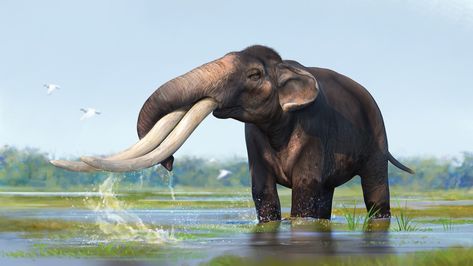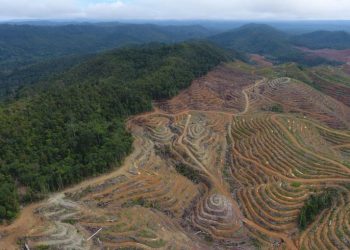Jakarta, Indonesia Sentinel — A research team from the Geological Museum of Bandung has discovered a remarkably well-preserved fossil of a prehistoric elephant, or Stegodon, on the slopes of Mount Pandan in Nganjuk Regency, East Java.
The fossil was unearthed in Tritik Forest, located in Tritik Village, Rejoso District, within the Nganjuk Forest Management Unit (KPH Nganjuk). The excavation team included researchers from the Geological Museum, members of the Kota Sejuk Nganjuk community, and officials from the Nganjuk Office of Youth, Sports, Culture, and Tourism (Disporabudpar).
“We assisted the Geological Museum of Bandung and the Kota Sejuk community during the fossil excavation at the forest area in Tritik Village, Rejoso District, on the slopes of Mount Pandan,” said Gunawan Widagdo, a Disporabudpar representative, as reported by Detikcom on Monday (October 20).
According to Gunawan, the fossilized Stegodon was found largely intact, an extremely rare occurrence in paleontological discoveries. The excavation began on October 14 and is expected to conclude on October 21.
“The fossil consists of many parts from a single body. The excavation has been ongoing since last Tuesday and will continue until tomorrow,” Gunawan said.
Preliminary measurements suggest the ancient elephant’s fossil measures approximately 255 centimeters in length. The excavation team consists of 22 members including 11 from the Geological Agency, 7 from local communities and Disporabudpar, and 4 local residents.
“The team includes 11 from the Geological Agency, 7 from the Kota Sejuk community, and 4 local residents — 22 people in total,” Gunawan explained.
Read Also:
He added that the Stegodon fossil was initially discovered in early 2024 by Susilo, a late member of the Kota Sejuk Nganjuk community, during a geological survey conducted by the National Geological Agency of Bandung.
“The fossil was found last year when the team was surveying fossil distribution in Tritik Forest. A preliminary excavation was carried out, but due to limited time, the fossil was covered with gypsum and tarpaulin and reburied for protection,” Gunawan said.
“In 2025, we resumed the excavation and continued the research. However, time remains limited, so only the exposed sections of the fossil could be lifted for now,” he concluded.
(Raidi/Agung)
























